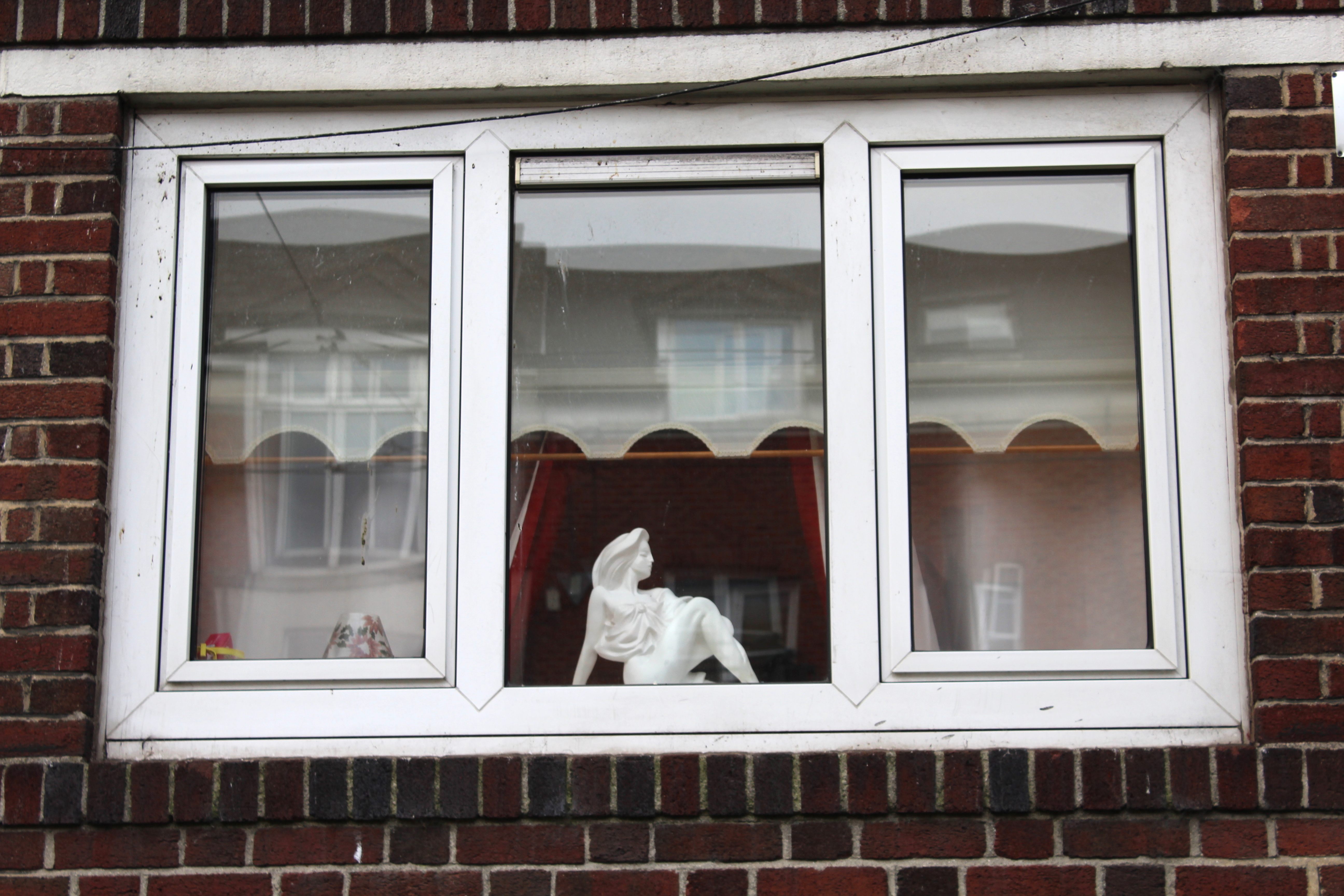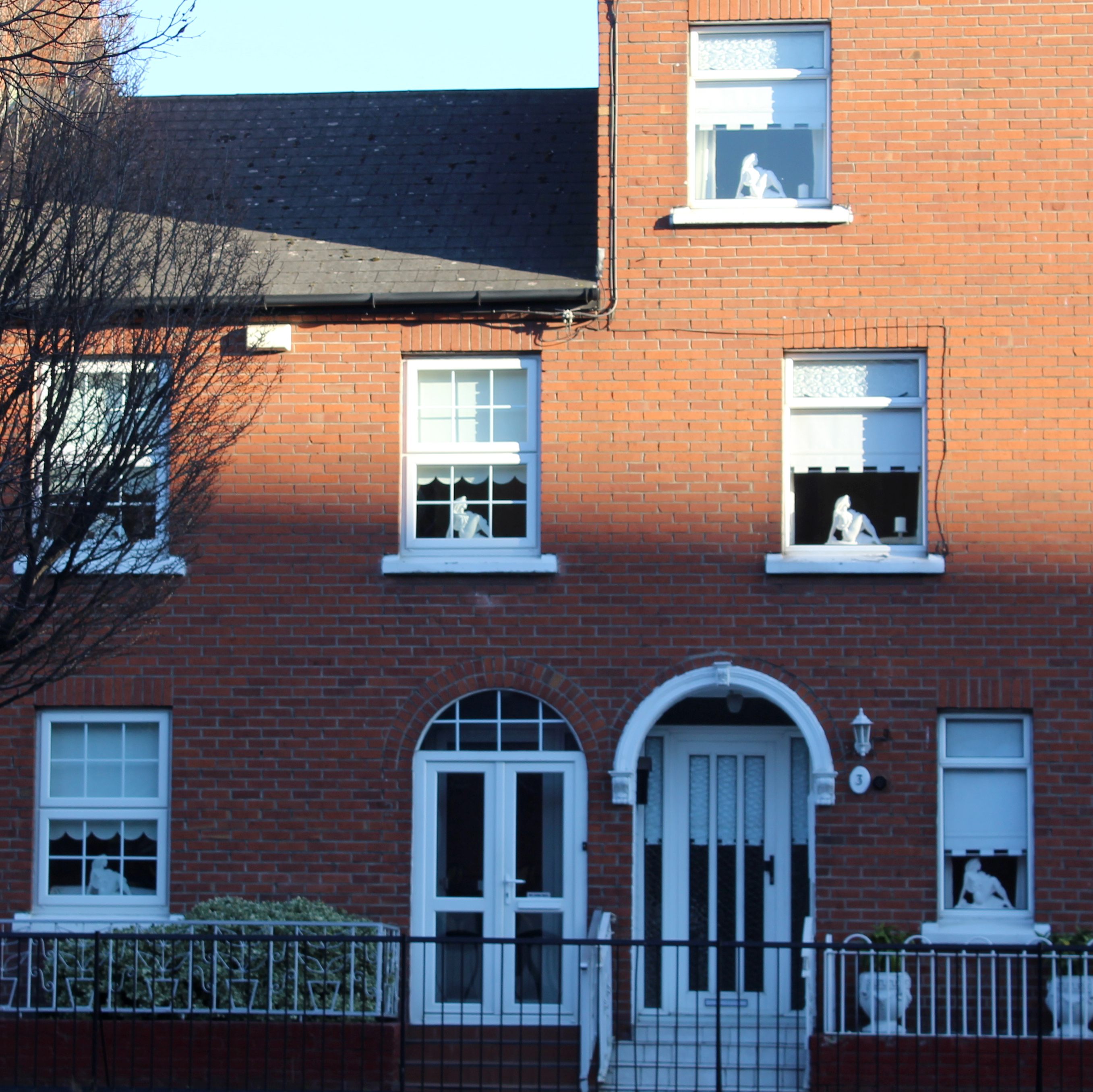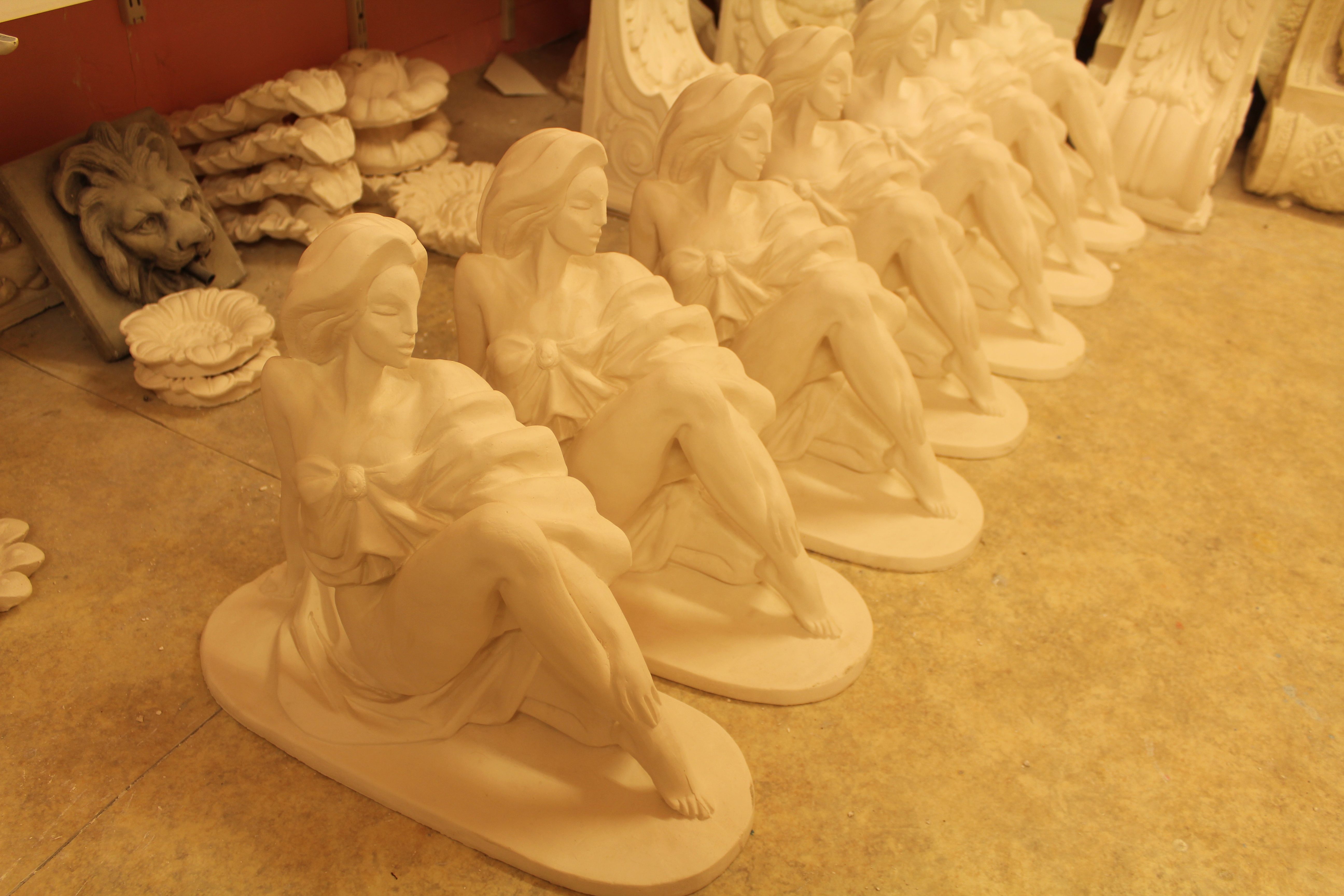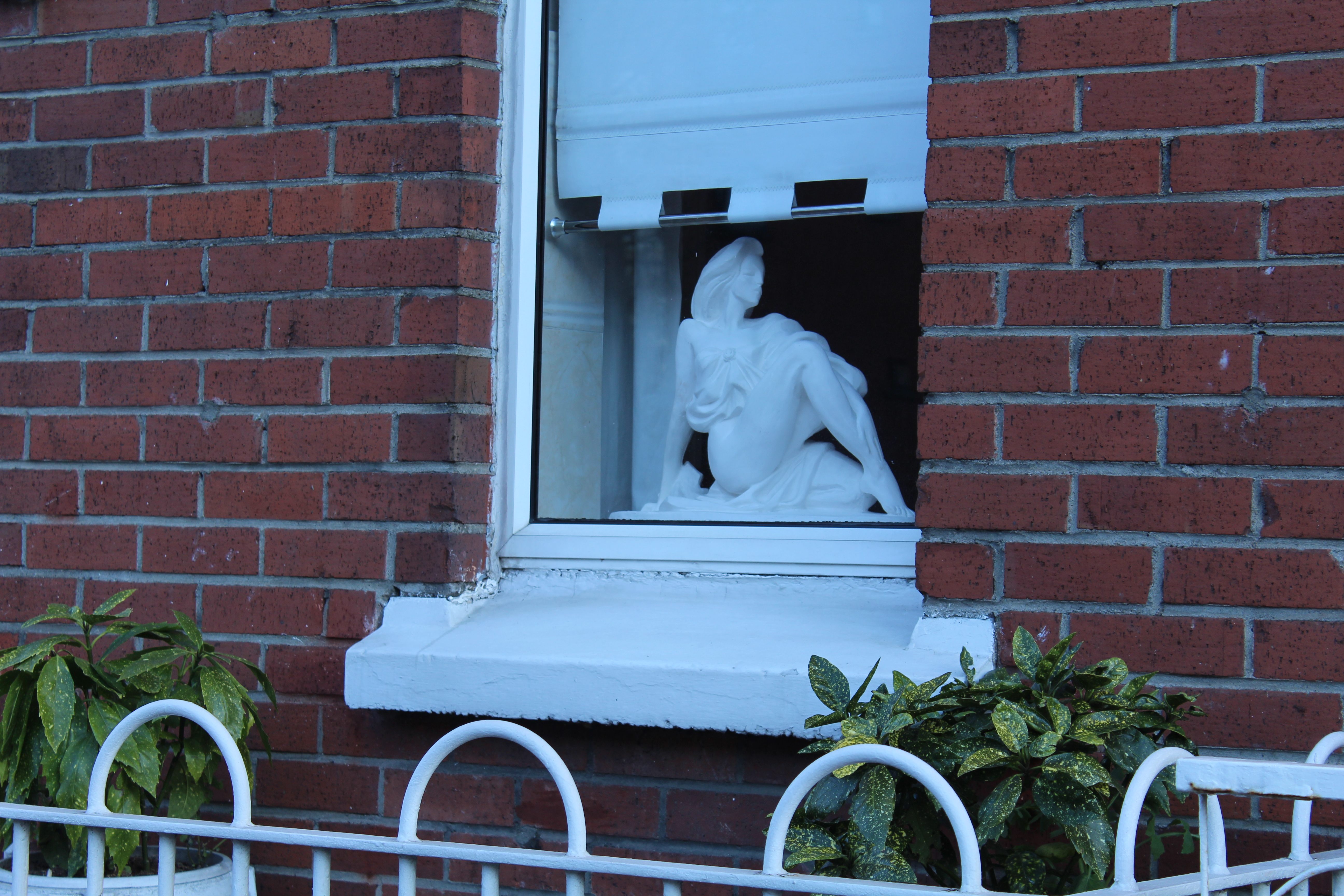The Alluring Statuette Dividing Dublin
The “Lady on the Rock” sculpture sits in windows all over town. But what does it mean?

From the bespectacled bust of James Joyce in St. Stephen’s Green to the busty bronze of Molly Malone off Grafton Street, Dublin is a city of icons. But if you venture out from the winding cobblestone and Georgian brick of the city center, something very different may grab your eye.
She bares the full length of a leg, sensuously arched at the knee. A wrap slips from her shoulders, falling down her chest and between her thighs. And she gazes out, seductive yet aloof, from the windowsills of countless Dublin homes. She’s a white plaster statuette many call The Lady on the Rock. Once you notice her, you’ll spot everywhere. Who is she? Why is she all over Dublin?
The Lady on the Rock answers to many names. Some dub her the White Lady or the Lady in the Window. Some root her in particular neighborhoods, like the Lady of Cabra or Crumlin, north and south, respectively, of the River Liffey, which bisects the city. Others claim her for an entire swath of town: Our Lady of the Northside. A number of natives don’t know she has a name, but they recognize her as a phenomenon seldom found outside Dublin.
The statuette started cropping up in working-class pockets of Dublin, including Cabra and Crumlin, during the late 1990s. As she multiplied over the 2000s, so did the myths about her. There was a shipwreck, one tale goes, off the west coast of Ireland. It killed all aboard, except for one lady who washed up on the rocks, naked. Another spins a more modern nautical yarn. A freighter lost a crate of the statuettes, purportedly mass-produced in China, to the Irish Sea; they were later hawked in discount stores. Could she represent the Virgin Mary or Mary Magdalene, Catholic imaginations have wondered? Or that same Molly Malone, a 17th-century beauty of many a myth, sung as a fishmonger but slandered as a lady of the night?

That the Lady on the Rock tends to populate inner-city working-class areas has spawned suspicion, nasty if flippant. Urban legends claim she’s a secret sign that drugs or sex are for sale where’s she housed. One taxi driver elaborated on this theory: Only if she’s pointed to the left does it mean you can buy drugs there. In some houses, you’ll see her perched on every available windowsill. The more statues in the windows? Well, the more ladies in the brothel.
The Lady on the Rock, though, has far less sensational origins, as Jessie Ward O’Sullivan uncovered in her 2010 short documentary, The Lady on the Rock. Harold Gardiner, a local artist, conceived the idea in the early 1990s; a craftsman, Edward Loughman, helped make her plaster mold. Gardiner sold statues to the occasional friend before passing away, and she would have passed into oblivion if Vincent Doran, a professional plasterer, hadn’t bought her off Loughman when clearing out Gardiner’s workshop.
Doran’s shop, Dublin Mouldings, showcases busts of Shakespeare and Elvis alongside the Lady on the Rock. In a few hours, Doran and his son construct her from silicon fiberglass using a two-piece mold. They clean up her joints and sell her for 20 quid. Sometimes a painter will even dress her up with some color. “People like seeing them in the windows. They look well,” Doran says.

A person buys one, some neighbors fancy their own, others want to fit in, a trend emerges. I visited some houses with Ladies in their windows; all declined to talk, my curiosity, perhaps, seeming as suspect as others have viewed their taste in interior design.
And, indeed, not everyone thinks the statuette looks well. “Absolutely disgusting,” the same taxi driver said. He didn’t buy the Lady’s lurid lore, but nor did he think highly of her—or her owners. “If someone presented me with these, I would break them up,” he says. “They think they are classy, but that’s nonsense. Keeping up with the Joneses? More like keeping up with the junkies.”
“It’s garbage. Snobbery,” Fergus O’Neill, a commercial artist, says of such sentiments, which often divide Dublin’s north and south sides. “She’s a working-class badge of honor.”

O’Neill began crafting White Lady Christmas ornaments four years back after noticing the Lady in the Window, as he calls her, around town. Other Dublin artists have embraced her, too, on t-shirts, theatrical posters, even as the focus of a high-school art project.
Originally, O’Neill wanted to make a punny desktop version: the Lady in the Microsoft Windows. But his project lead him to some extraordinary discoveries. In the early 20th century, Dublin’s grand Georgian homes were divided up into squalid tenements, whole families squeezed into single rooms. But if a family displayed matching objects in multiple windows, even floors, O’Neill says, it signaled they could finally afford multiple rooms. The Lady on the Rock follows in this tradition: “It’s fashion and it’s marking one’s territory,” O’Neill says, proudly adding he keeps one in his own home.
Dublin experienced a similar trend in the 1960s. Families displayed white horse statues in fanlights over Georgian doors. But, according to O’Neill, these families were posh and Protestant. The Lady on the Rock, then, could be the working-class—and Irish Catholic—answer to the trend.
For some, the Lady on the Rock’s identity will ultimately be just that: a trend. “She’s a real-life meme,” says Ruth Keating, who sells O’Neill’s ornaments at a local gallery. “An interesting thread in Dublin’s day-to-day,” but only a short-lived icon in the end.
Not for O’Neill. The Lady on the Rock is “a real symbol of Dublin,” he says. And a fitting one, too: A simple white plaster mold, reshaped and colored in by Dublin’s many stories, by Dublin’s many identities.













Follow us on Twitter to get the latest on the world's hidden wonders.
Like us on Facebook to get the latest on the world's hidden wonders.
Follow us on Twitter Like us on Facebook